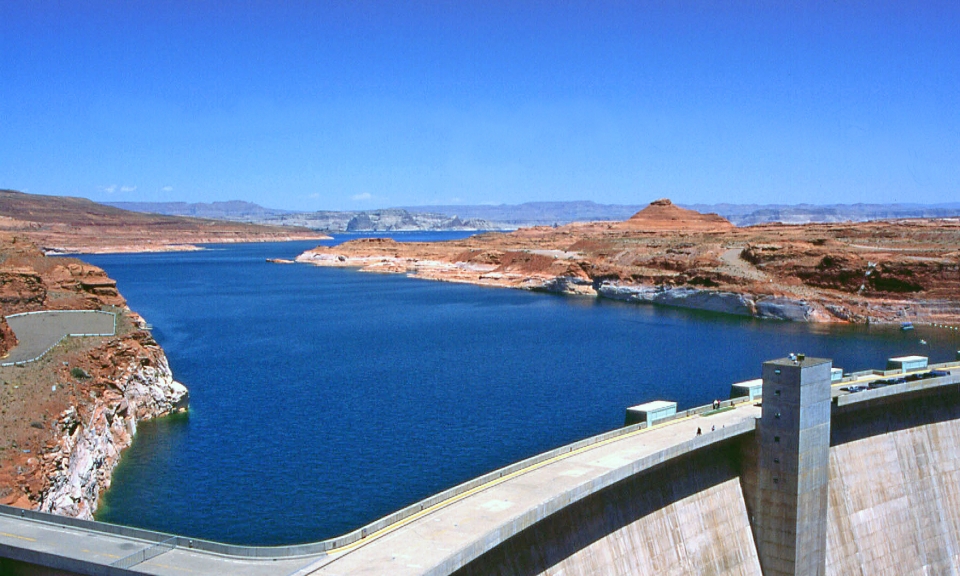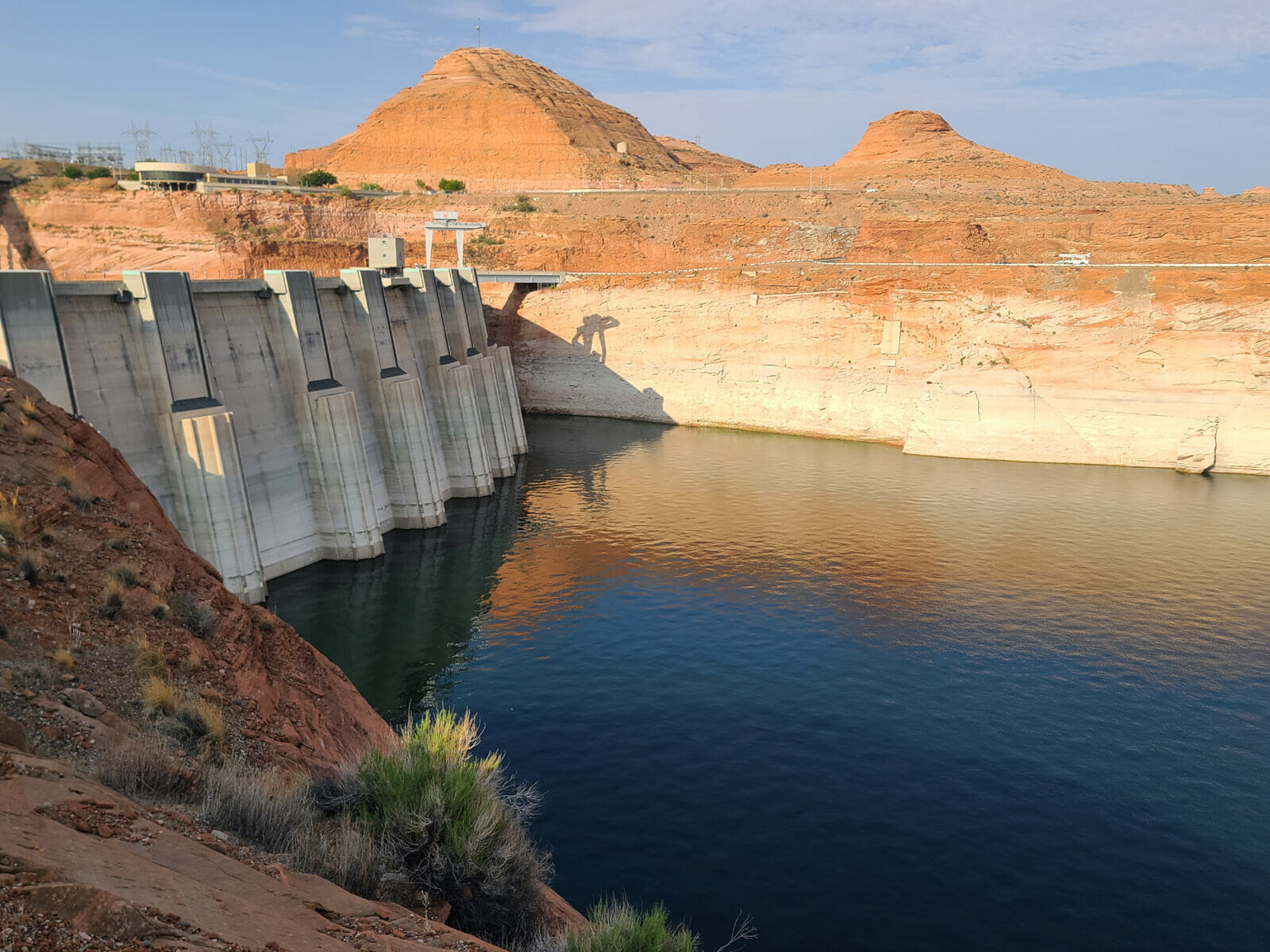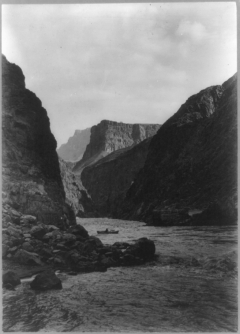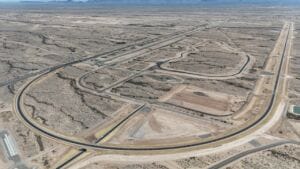Let’s be clear about this: It’s not just about Arizona water.
Every time you lift a glass of water to your lips, enjoy a hot shower or fill up your swimming pool, there’s a certain amount of fraught history coming out of the faucet.
From personal health and food production to recreation, business, politics and even culture, water touches almost every aspect of life in Arizona. It is essential. Despite this fact, over the past century, not much has changed in terms of how we get it, how we use it and our attitudes toward its encroaching scarcity. But those in the know understand we’re getting to a tipping point that will force us all to adjust our attitudes and change our consumption habits.
And change we must.
READ ALSO: Analysis: Arizona boasts strong record on water management
READ ALSO: Some fast facts to know about the Arizona water supply
The Colorado River provides water for millions of acres of irrigation and some 40 million people in tribes and cities in Arizona, Nevada, New Mexico, Colorado, California, Wyoming, Utah and Mexico. But the literal wellspring of the Southwest region’s vitality is drying up, and fast.
We’re already in the second year of allocation cuts, which directs how much states can draw from the Colorado River, and deeper cuts are on the way. A “Tier 1 shortage” has already been declared, but the feds have recently indicated that a Tier 2 shortage may be declared by the end of this year, mandating larger cuts, especially to Arizona.
The Bureau of Reclamation has already asked basin states and tribes to give them suggestions for how to cut 2 million to 4 million more acre-feet of water consumption per year to keep the river’s largest storage reservoirs, Lake Mead and Lake Powell, from falling to dead pool and becoming unusable.

Scientists, researchers and academics who have been ringing the alarm bell for years are now getting more attention thanks to recent photos of bones and sunken boats in Lake Mead, bathtub rings at the Hoover Dam or the stark satellite images of these shrinking bodies of water.
Clark County, Nevada, recently voted to cap the size of all new swimming pools to save water. The town of Las Vegas, New Mexico, announced in late August that it had less than 30 days of drinking water. And on Sept. 19, a top Colorado official warned that Western reservoirs could run dry in three to four years if strict conservation methods aren’t adhered to.
It’s not as if this is coming out of the blue. The public has been concerned about this issue for some time, but many feel that policymakers and water managers have failed to act or act quickly enough to meet the spiraling challenges.
It’s also a concern to several experts at Arizona State University, who have been using their knowledge and skills to gauge the severity of this phenomenon and have been charged to come up with possible solutions to this existential threat to the Southwest.
What follows is the first in a three-part series by ASU News on the 100th anniversary of the Colorado River Compact, its history, how we got here and where we are headed.

A dubious start
Agreements, pacts and contracts are usually done in good faith. But that really doesn’t apply to the Colorado River Compact, which will recognize its centennial in November. According to one Arizona State University professor, every participant went into the deal with suspicion, self-interests and hostility toward other participants in the negotiations.
“There’s an old phrase used in the West: ‘Whiskey is for drinking and water is for fighting,’” said Taylor Weiss, assistant professor in ASU’s Environmental and Resource Management Program. “Even when these agreements were made — and let’s call these forward-thinking individuals who were very creative — they were thinking about how they were going to subvert those agreements from the onset. … Essentially, everybody thought everyone else was padding their numbers.”
Weiss is referring to the original Colorado River Compact of 1922, which took seven states and the federal government almost a year to hammer out. Their goal was to fairly allocate the river’s water among the seven basin states so each would know how much water they could remove from the river to promote future development.
Their task sounded simple enough: reduce floods and put the river’s water to work supporting agriculture, industry, urban growth and hydroelectric power generation. They also hoped the compact would reduce conflict and litigation between the Colorado River Basin states.
But the framers of the compact could not anticipate the future water needs of the Southwest with its explosive growth after World War II. Demand for water quickly exceeded supply, and “water politics” remained ever contentious.
California was the 800-pound gorilla in the compact negotiations because it had an advantage over the other basin states.
“The doctrine of prior appropriation guides all Western water law. … (It) essentially states that whoever first diverts water from a stream or river and puts it to beneficial use can claim priority rights to that water,” said Paul Hirt, an emeritus professor of environmental history at ASU. “California had the population, industry and money to build their own diversions, dams, canals and pumps. They were already diverting a quarter of the water and the other six states were starting to panic, trying to figure out how they could equitably divide up the river before California got everything.”
Adding fuel to the fire was the fact that California contributed the least amount of runoff to the river.
It took years of haggling to get something solid on paper. Finally, representatives from the seven basin states assembled on Nov. 9, 1922, in Santa Fe, New Mexico, with then-U.S. Commerce Secretary Herbert Hoover for a series of meetings to finalize the compact. Their core mission was to apportion the flow of the river among the seven basin states and Mexico.
The government had measured the river’s flow at Lees Ferry, Arizona, for several years and believed that 17 million acre-feet of river water flowed through the basin in an average year. They allocated 7.5 million acre-feet to the Upper Basin states and 7.5 million acre-feet to the Lower Basin states, with 1.5 million acre-feet allocated to Mexico. The remaining half-million acre-feet would serve as a buffer for droughts and evaporation.
Unfortunately, the decade prior to 1922 was an unusually wet period so the government substantially overestimated the amount of annual river flow. This would have been trouble enough, but climate change and the recent decades-long drought have exacerbated this deficit.
Today, the river is a shell of its former self, and the compact is more a liability than an asset, Hirt said.
“The states fight tooth and nail to retain their historic allocations, even though they are unworkable and, in many ways, inequitable,” Hirt said. “Originally designed as a solution, the 1922 compact now stymies our ability to adapt quickly to climate change and correct historical injustices.”
After almost three dozen meetings over a two-week period, the compact was finally signed on Nov. 24, 1922.
While California had the population and resources to invest in large water infrastructure after 1922, Arizona in contrast could never afford the cost to bring water from the Colorado River hundreds of miles to its main urban and agricultural regions of greater Phoenix and Tucson. So, after decades of lobbying, Arizona finally convinced Congress in 1968 to fund and build the Central Arizona Project (CAP), a system of canals and pumps that lifts water more than 3,000 vertical feet and sends it more than 300 miles from the California border to the state’s thirstiest farms and metropolises. CAP was finished in 1993.
Waterwise, Arizona had finally arrived.
Early into the millennium, the Southwest entered an exceptional era of persistent drought.
And now we’re about to enter a new era — the era of the unknown.

The boomerang effect on Arizona water
The Colorado River Compact was made by a few select men and impacted millions of people. But they never included a major group: Native American tribes.
This wasn’t a mere oversight or an act of shortsightedness but quite deliberate, according to one ASU expert.
“I think their exclusion was foolish in the extreme, and our current river management is evidence of that foolishness,” said Rhett Larsen, the Richard Morrison Professor of Water Law at ASU’s Sandra Day O’ Connor College of Law. “We must call it what it is — racism, regardless of if it was active racism or the passive racism of thoughtlessness. Important voices who understood the river well, who had important ideas and strongly protected rights were left out of the conversation and should have been involved from the very beginning.”
ASU Law Professor Robert J. Miller (Eastern Shawnee) believes tribes were left out of the conversation for a much more sinister reason — that America was following its path of Manifest Destiny, an explicitly white nationalist ideology that intentionally marginalized people of color in the developing nation.
“It was definitely ethnic cleansing and perhaps even genocide underway,” said Miller, who is the Willard H. Pedrick Distinguished Research Scholar and the faculty director of the Rosette LLP American Indian Economic Development Program at ASU. “Federal Indian policies were all about assimilating Native Americans and just getting them out of the way.”
When the compact was approved in 1922, Native American tribes were in bad shape. The American government’s aim was to isolate them on reservations or to assimilate them into cities and destroy their traditional way of life. Disease, malnutrition, re-education programs, racial discrimination, economic marginalization and a diminishing land base left tribes with few options or recourse. They were on the ropes for the next several decades as Colorado River water was divvied up among the seven basin states with nothing allocated to tribes.
In 1963, Indigenous people were thrown a legal lifeline when the Supreme Court decided to look at the compact again after a suit brought forward from nearly a decade before, Arizona v. California. The court concluded that five Indian reservations had reserved water rights and reservation lands that were capable of growing crops that were entitled to water allocations.
The next few decades saw a long period of water rights settlement involving Congressional legislation and water boomeranging back to some of the tribes after these rulings.
“Many of Arizona’s tribes have excellent representation, and they have very innovative and forward-thinking leadership in terms of water,” Larson said. “And because of that, they know how to assert those rights.”
Some are entering leasing agreements to sell their excess water to several cities and municipalities throughout the state. That could be potentially lucrative for some Arizona tribes — like those with high-priority water rights to mainstem Colorado River supplies, such as the Colorado River Indian Tribes, and those who have the legal authorization and means to convey their water to entities who want to buy it.
Not all tribes are in that situation, though, and many must continue to litigate and hope for settlements that will clarify their water rights and provide for the delivery of at least some of their water.
“Some are dealing with underinvestment in infrastructure and reliance on funding that was based on assumptions about future water supplies that haven’t held up,” Larson said. “Other tribes still remain in limbo, waiting for the outcome of litigation while the boomerang just sort of spins out in the distance.”
As of 2022, 14 of the 22 federally recognized Arizona tribes have settled water rights. A few — like the Hopi, Hualapai and Navajo — have not. And many tribes still largely hold what is known as “paper water” — a water right on paper — but little actual wet water.
“Wet water is when you pump it out of the river to use it,” Miller said. “(Paper water) is when the river flows by your land and you’re not allowed to use it. Most tribal water stays in the river.”
Melissa K. Nelson, a professor of Indigenous sustainability in the School of Sustainability and a member of the Turtle Mountain Band of Chippewa Indians, said, “The Native peoples of Arizona have faced egregious and unjust treatment by these water compacts, and a legacy of racism and erasure by Manifest Destiny.
“They, and all people of Arizona, face an uncertain future. Yet it will be the first peoples who have lived in this desert landscape for thousands of years who will be resilient and persevere through this drought transition, as they always have.”
Editor’s note: This is the first in a three-part series examining water in the Southwest in recognition of the 100th anniversary of the Colorado River Compact. Look for the next installment in October and the third in time for the compact’s anniversary near the end of November.





